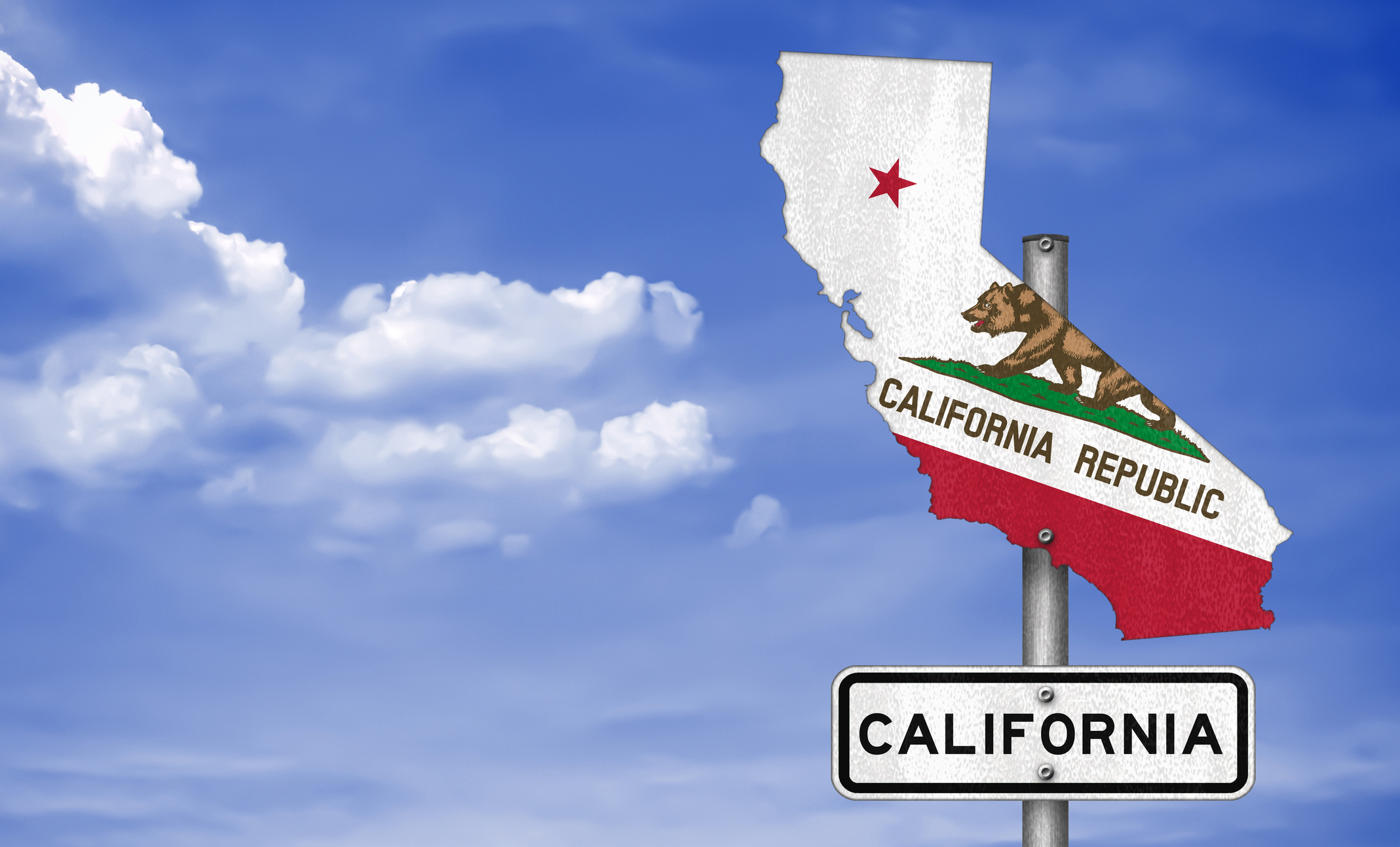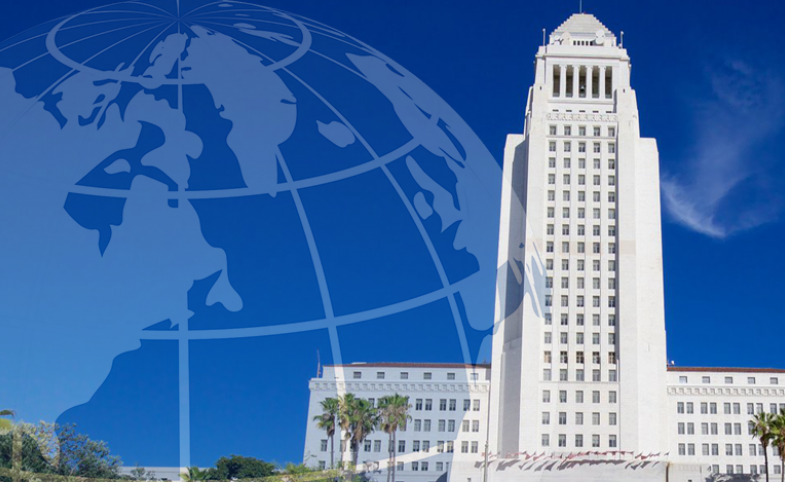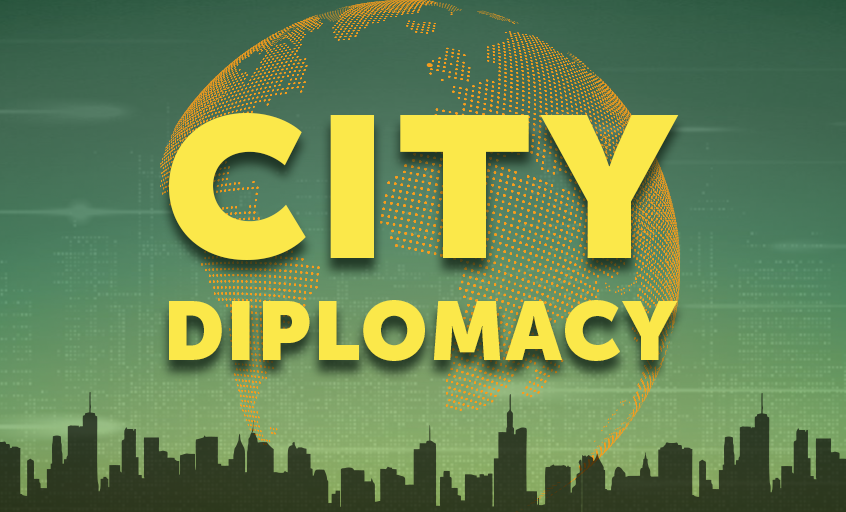To download a PDF of this paper, click here. Building a Robust Capacity Framework for U.S. City Diplomacy By Jay Wang and Sohaela Amiri With cities increasingly poised – and being called upon – to play a...
KEEP READINGThumbnail Image:

To download a PDF of this paper, click here.
Subnational Diplomacy, Climate Governance & Californian Global Leadership
by Benjamin Leffel
Introduction
The traditionally nation-state-dominated arena of global climate change governance has become increasingly populated by subnational governments and the coalitions and networks they form. Contra the existing unitary, state-centric and top-down structures of the United Nations (UN), this has produced a new international plane of climate mitigation activities where multiple centers of bottom-up power and influence exist, a growing landscape of “polycentric climate governance.”[1]
While this new plane operates independently from and parallel to traditional global climate governance structures, the two are also increasingly collaborating with one another, a trend being called “hybrid multilateralism.”[2] In both cases, subnational actors are demonstrating their crucial potential to reduce greenhouse gas (GHG) emissions and thus directly contribute to climate governance goals pursued by the nations of the world. Illustrative of this potential is the case of the State of California, its subnational coalition building both globally and vis-à-vis the U.S. and China, and the resultant direct support for Paris Agreement goals in the absence of U.S. federal leadership.
As the structures of global climate governance evolve, so too does the conduct of international communication. Whereas the role of local governments in traditional public diplomacy was to communicate the will of national governments abroad,[3] the new public diplomacy involves subnational authorities pursuing their own international policy communication goals.[4] A live example is the ongoing response by local authorities to U.S. President Trump’s mid-2017 announcement of intent to withdraw the U.S. from the Paris Agreement, as leading subnational authorities in California and elsewhere are using public diplomacy channels to communicate, inspire and recruit more participants to fill this federal leadership gap. These dynamics are embedded in larger, broader contexts beyond just the issue environmental protection and the current era. Subnational diplomacy involves state/provincial and/or local leaders claiming political authority in foreign affairs,[5] which may be in opposition to national policies, may fill the void of policy leadership left by ineffectual national governments, or may assist national governments by adding capacity from below.
The late Cold War saw many examples of subnational diplomacy in opposition to national policies.[6] Throughout the 1980s —fearing nuclear annihilation via the U.S.-Soviet arms races —nearly 4,000 locales in 17 countries, including hundreds in the U.S., declared themselves nuclear-free zones, prohibiting nuclear weapons production-related activities to take place within their jurisdictions.[7] City governments organized into broader efforts to advocate for nuclear abolition, through creating organizations such as Mayors for Peace and convening meetings such as the World Conference of Mayors for Peace Through Inter-city Solidarity in Hiroshima.[8] After the Reagan administration and Congress failed to place hard corporate sanctions on Apartheid South Africa, U.S. cities divested $450 billion worth of stock in companies that did business in South Africa,[9] and by 1990, 59 cities, 25 states and 13 counties had enacted some type of legislation banning investments in South Africa.[10] Civil war in Central America induced by the Reagan administration’s funding of anti-communist forces resulted in several U.S. cities establishing sister city relationships with Central American cities to send aid, as well as declaring themselves sanctuary cities and states for refugees fleeing from the region.[11] Even the State of Wisconsin became a sanctuary state,[12] reflective of California’s recent decision to do the same.[13]
Subnational diplomacy used for supplementing national efforts from below has been seen in its application for peacebuilding. For example, after the war between Serbia and Croatia ended in 1995, a range of Croatian municipalities via UN intervention cooperated to restore ethnically fair distribution of public services, facilitated inter-ethnic trust building, and ultimately helped prevent ethnic violence in the post-conflict period. The Municipal Alliance for Peace in the Middle East was created via The Hague in 2005, which used joint initiatives with the Association of Palestinian Local Authorities and the Union of Local Authorities of Israel to facilitate municipal cooperation between Palestinian and Israeli local authorities, and contribute to much-needed trust building.[14]
The varied applications of subnational diplomacy have also found local actors assuming new roles as sponsors, facilitators and communicators of public diplomacy, where “enhancing communication between localities may result in better perception and understanding of the countries involved and represented.”[15] For instance, Taiwan faces difficulties in achieving economic and public diplomacy goals due to lack of formal diplomatic recognition; however it bypasses these difficulties by using sister city relationships and other city government international networking mechanisms to create new trade, investment and branding opportunities.[16]
Subnational Coalitions & Global Governance: Climate Change
As a means of adding subnational capacity to national policy efforts, subnational diplomacy can play a prominent role in the global fight against climate change. The formal regime for global climate governance, the UN Framework Convention on Climate Change (UNFCCC), convenes UN member states annually at the Conference of the Parties (COP) to advance the agenda for global climate change mitigation, adaptation and resilience agenda. It is national government parties that are tasked with carrying out emissions reductions, agreed to in state parties’ Nationally Determined Contributions (NDCs) to the Paris Agreement. However, when calculating NDCs, national governments normally do not fully take into account the emissions reduction capacities of their subnational jurisdictions, resulting in NDCs that may not be as high as they otherwise would be.
It has therefore become increasingly apparent that for NDCs to more fully reflect national emissions reduction capacity, subnational capacity must be better incorporated into NDC calculations.[17] COP19 (2013) produced the decision to further engage cities and subnational authorities for this purpose, and COP20 (2014) established the Non-State Actor Zone for Climate Action (NAZCA) to further incorporate subnational entities’ commitments to help nation-state parties exceed the level of their current NDCs.[18] The principal entity facilitating this incorporation is the carbonn Climate Registry®, which is run by ICLEI-Local Governments for Sustainability (ICLEI) and directly collects the emissions reduction commitments of 1,019 reporting subnational governments from 86 countries, and serves as the prime data partner of NAZCA. The Registry provides national government actors access to information on their respective subnational governments’ emissions reduction capacity needed to more accurately calculate—and scale up—their NDCs. The collective emissions reductions made by NDCs submitted by nation-state parties as of November 2017 suffer from an “emissions gap:” They fall short by 22-26 gigatons of CO2 equivalent (GtCO2e) of what is needed to limit global temperature rise to 2° Celsius above pre-industrial levels by 2030.[19] However, according to the Registry’s 2017 report, commitments by their reporting subnational jurisdictions can reduce emissions by 5.6 GtCO2e by 2020 and 26.8 GtCO2e by 2050.[20] These projected emissions reductions provide a start to what could make the deciding difference on whether global climate mitigation efforts succeed. That is, if enough new and additional subnational jurisdictions make and report emission reduction commitments to the Registry, and if these are successfully incorporated into nation-states’ NDCs, the resultant scaling up of NDCs could fill the emissions gap.
The key body within the UNFCCC facilitating the contributions of subnational authorities is the Local Governments and Municipal Authorities (LGMA) constituency, which is led by ICLEI, the largest existing global network of city governments for environmental protection. ICLEI is a transnational municipal network (TMN), or a formalized association of city governments that solve collective urban and broader global problems, which exists alongside and often cooperates with other TMNs.[21] Over time, LGMA has incorporated other TMNs, such as the climate change-focused C40 Cities Climate Leadership Group (C40) and Regions of Climate Action (R20), and the more broadly focused United Cities and Local Governments (UCLG). At COP21 (2015), the Paris Agreement was adopted, replacing the Kyoto Protocol as the world’s collective climate action accord, categorizing cities as “non-party stakeholders,” and further calling on nation-state parties to work with subnational authorities to strengthen their climate mitigation activities.[22] COP22 (2016) further cemented the role of subnational governments as key partners to nation-state parties in supporting and implementing NDCs.[23] Even more concisely, COP23 (2017) produced the “Bonn-Fiji Commitment of Local and Regional Leaders,” in which subnational authorities pledged to establish their own “Locally and Regionally Determined Contributions” to help national governments achieve and exceed existing NDCs. This can act as a key mechanism driving forward the scaling-up of NDCs by way of central-local contact and collaboration. The ultimate result of scaling-up efforts will not be observable until state parties submit updated NDCs in 2020, per the Paris Agreement. In the meantime, state parties, subnational leaders and other stakeholders are taking stock of their emissions reduction capacities and pressing for increased ambition to that end via the Talanoa Dialogue, a stocktaking exercise that will conclude at COP24 (2018).
The manner of inducing participation in the above begs attention. National governments can and are encouraged to legally require subnational governments to join climate initiatives and networks, to make emissions reduction commitments and to report them, but for various reasons this does not always happen. This leaves a large margin in which subnational governments voluntarily join, commit and report, wherein they are inspired rather than required to do so. Such recruitment by inspiration requires effective and far-reaching communication targeting subnational actors, a role increasingly assumed by TMNs and other subnational initiatives. This work of recruitment by inspiration perforce grants the public diplomacy of subnational actors a directly functional role in the immediate climate change fight. Following President Trump’s June 2017 announcement of his intention to withdraw the U.S. federal government from the Paris Agreement, California Governor Jerry Brown and other likeminded American subnational leaders forged the U.S. Climate Alliance, a coalition of U.S. states and cities upholding the U.S. commitment to the Paris Agreement from the bottom-up. In furtherance of these commitments, they also established America’s Pledge, which aims to track and quantify the impact of U.S. non-federal climate action, including local emissions reduction capacities. All of these efforts were designed to enable these subnational authorities to quantify the contribution of their emissions reduction efforts and capacities. Although the U.S. federal government did not open a pavilion at COP23, Governor Brown, in his capacity as COP23’s Special Envoy for States and Regions, and a coalition of U.S. subnational leaders opened their own unofficial pavilion under the banner, “America's Pledge: We Are Still In.”
President Trump’s withdrawal of federal support for the Paris Agreement might have signaled to the rest of the world that the United States as a whole no longer considered climate change mitigation to be a policy priority. However, the ongoing efforts of organized subnational leaders like Governor Brown have clearly communicated that this is not the case. Instead of communicating national government policies abroad, per the traditional public diplomacy role of subnational actors,[24] in this case local leaders are communicating the policy ambitions of the national society, or a large portion of it. Brown’s efforts speak to the capacity that subnational actors play a significant public diplomacy role.
Californian Subnational Diplomacy
Another example of California’s climate action illustrates the use of subnational diplomacy to exercise policy leadership in the absence of national intervention and to add capacity to nationally relevant efforts from below. Under Governor Schwarzenegger, California passed the Global Warming Solutions Act of 2006, a GHG reduction measure with a cap-and-trade program placing a ceiling on statewide GHG emissions, the first program of its kind on this scale in the U.S. It also achieved a linkage of California and Quebec’s cap-and-trade program,[25] the first of its kind in North America. In 2010, after judging COP15 to have been a failure, Governor Schwarzenegger launched Regions of Climate Action (R20), a climate change-focused transnational network of subnational governments improving local emissions reduction capacity the world over, which comprises more than 40 government members.
Schwarzenegger’s successor, Jerry Brown, led formation of the Under2MOU in 2015,[26] which began as a coalition of subnational governments committing to emissions reduction in advance of COP21, and today has more than 170 subnational governments across 33 countries as signatories.[27] In 2016, Governor Brown convened an inaugural “Sub-national Clean Energy Ministerial” to bring new signatories onto the Under2 agreement. The second iteration of the Ministerial took place in Beijing in early June 2017, and because this coincided with President Trump’s announcement of the U.S.’ withdrawal from the Paris Agreement, the Ministerial turned into a platform on which several states and cities from the U.S. and elsewhere would reaffirm their commitment to the Paris Agreement.[28] The Under2 agreement consequently gained several new endorsers, including subnational governments and the nation of Denmark.[29]
Under the mantle of leadership that Brown assumed during the unofficial U.S. pavilion at COP23 and the Under2 agreement efforts, Governor Brown and the State of California will convene the “Global Climate Action Summit” in September 2018. At this summit the world’s subnational governments, associated networks, private enterprises and NGOs will be invited to “spur deeper commitment from all parties, including national governments.”[30] The Summit’s goal is to “galvanize a global movement beyond national governments, to the people to take on the threat of climate change.”[31] Because the Summit is also intended to build subnational capacity and momentum for COP24 in Poland to be held later in 2018,[32] it constitutes both a parallel and complimentary effort to the UNFCCC climate regime. Sponsored by the UN, this Summit will be the largest convening yet of subnational leaders to help national governments achieve and exceed their existing NDCs, yielding further structural capacity for local authorities to contribute directly to global climate governance.
Equally interesting is what cannot easily be foreseen. Beyond helping nations exceed NDCs, what new post-Summit subnational climate initiatives will emerge? And what form will they take within the LGMA, city networks like C40 and individual subnational governments? Most of the answers will likely come only after the Summit itself but will offer important considerations for city diplomacy discussion. Even as California is leading global-scale climate action, it is also brokering between the world’s first- and second-largest emitters of GHGs: China and the U.S.
U.S.-China Climate Cooperation via Subnational Ties
In 2014 U.S. and Chinese Presidents Obama and Xi agreed to a bilateral “U.S.-China climate deal” through which both nations would engage in climate mitigation activities, including subnational initiatives. This led to the establishment of the “U.S.-China Climate Change Working Group,” which housed the U.S.-China Climate Smart Cities Initiative that spurred cities in both countries to make further emissions reductions commitments and mutually build climate action capacity.[33] The Lawrence Berkeley National Lab’s China Energy Group in California played, and continues to play, a crucial role in the facilitation of knowledge flows. The Energy Foundation, which is headquartered in California, also is a mainstay in the above initiatives, and further works with the Chinese national and municipal governments to reduce carbon emissions through its Low Carbon Cities Program. In 2013, the State of California, via Governor Brown, signed an MOU with China’s National Development and Reform Commission, agreeing to cooperate on the exchange of policy planning and technology pertaining to emissions reduction. This agreement was a result of California’s ambitious GHG limits and cap-and-trade system, and was the first ever agreement made between a Chinese national government entity and a foreign subnational government.[34]
Also in 2013, and also attributed to California’s emissions reduction-related policy expertise,[35] the State of California and the city of Shenzhen—arguably the most active low carbon innovator in China—entered into an agreement whereby California and Shenzhen would exchange low-carbon policy knowledge, mutually grow their low carbon technology markets, and further reduce GHG emissions.[36] Former Governor Schwarzenegger’s climate network, R20, is headquartered in Geneva, Switzerland, but nevertheless constitutes important connective network tissue in California-China climate cooperation. Since 2014, R20’s Chief for China, Dr. Yufu Cheng, has made important strides for R20 efforts in China, signing an MOU with Shenzhen’s International Academy of Low-Carbon Development to advance low-carbon project development and financing in Shenzhen, and to build further cooperative capacity with other Chinese cities.[37]
Further still, in 2017 the State of California entered into an agreement with China’s Ministry of Science and Technology to establish the California-China Clean Technology Partnership, in which subnational leaders on both sides will cooperate on the exchange, development and commercialization of climate mitigation technologies. As a result, arguably the largest critical mass of U.S.-China climate change cooperation infrastructure outside of Washington now rests in California. The example of California shows that subnational entities have the capacity to function effectively in the rarified atmosphere of the highest level of international policy negotiations. Subnational practitioners should consider ways in which their own policy expertise might similarly be leveraged through innovative diplomatic mechanisms.
Though China and the U.S. are the world’s two largest emitters of GHGs, they alone cannot achieve the total emissions reductions necessary to slow climate change—it must be a global collective effort among other emitting nations and their subnational governments. However, if the two largest emitters can work successfully together at both national and subnational levels, this provides a message of solidarity that may be communicated via public diplomacy channels and used to generate more subnational action. The Global Climate Action Summit is poised to serve as one such public diplomacy channel, which also will incorporate and advance California’s multi-pronged climate action cooperation with China—and with various other signatories of the Under2 agreement—the progress of which will matriculate at future COPs and will bring more subnational governments into their midst.
What Subnational Authorities Can Do Now
Practitioners at the city level, be they in the public, private or civic sector, have several immediate opportunities to contribute directly to the global climate fight. First, they can galvanize their local government representatives to commit to and to take stock of GHG emissions reduction, and to register these commitments into the carbonn Climate Registry. This will allow their city’s emissions reduction capacities to be taken into account alongside the other reporting locales in the Registry, which will directly contribute to national government parties elevating their own NDCs, and ultimately getting ever closer to filling the emissions gap. Practitioners should encourage their local government and business leaders to attend the Global Climate Action Summit in September 2018 in San Francisco, where subnational emissions reduction capacities of local governments, businesses and NGOs will be advanced in the lead-up to the COP24. This will also give practitioners the opportunity to connect with the Under2Coalition.
Critical to locales achieving these capacities is having the necessary financing; just as there is an “emissions gap,” there is also an “investment gap” given the amount of finance needed to build the necessary local capacity to sustain the costs of reducing emissions. To that end, practitioners should encourage any local entities involved in generating or mobilizing climate finance to join the Cities Climate Finance Leadership Alliance, the premier network for mobilizing this investment, which will in turn reinforce and expand their own locale’s efforts to generate climate finance.
The example of California offers a first-hand example of the new “polycentric”[38] global climate governance landscape growing, aiding national governments, filling a federal leadership void, and adding crucial new capacity from the bottom-up. In effect, California’s agreements with China allow direct engagement with national-level Chinese leaders to help both nations achieve more effective climate action; the U.S. Climate Alliance and Under2Coalition are actively filling U.S. federal leadership gaps; and the Global Climate Action Summit is providing the infrastructure for coalescing subnational and national actors, businesspeople and others, to create new capacity needed to fight climate change, and to allow the new multi-level landscape of climate action to yet further evolve. All of these things are replicable by other subnational leaders. Innovators and champions of such global causes, like California, are often also the first, but they are never the last. Following in the stead of innovators, local leaders and practitioners from anywhere in the world can create their own subnational coalitions, or they may simply join those already existing and growing coalitions.
Just as technical knowledge and fiscal capacity are required to engage in these activities successfully, so too is a local leader’s communicative ability, both domestically and internationally. Domestically, governors, mayors and other local leaders can achieve buy-in from varied local constituencies through pointed and nuanced communication of the purpose and benefits of participating in international coalitions, climate change or otherwise. Internationally, local leaders’ ability to purposefully communicate mutual goals with coalition counterparts abroad can determine one’s success in participating in existing coalitions, and particularly in creating new ones.
This public diplomacy of international coalition participation also involves the practice of place branding, where local leaders can globally promote their state, province or city as a leader in climate, peacebuilding, security, education, culture and varied other areas. Over the long term, this allows for a locale to attract tourism and investment, to market local goods for export markets abroad, and to establish new targeted international ties—all of which help a locale to better compete in the global economy.
All of the above is crystallizing as public diplomacy best practices of subnational engagement in global governance, with helpful templates offered by the example of California’s leadership. Subnational authorities working alongside national leaders on global governance is today considered a unique “hybrid” arrangement,[39] but as these hybrid formations become permanent fixtures, they cease to be novel, and become standard practice for local authorities that dare to call themselves modern.
[1] Ostrom, Elinor, 2010. “Polycentric systems for coping with collective action and global environmental change,” Global Environmental Change, Vol. 20, no. 4, 550-557.
[2] Abbott, K.W. 2013. “Strengthening the transnational regime complex for climate change,” Transnational Environmental Law, vol. 3, no. 1, 57–88; Bäckstrand, K., Kuyper, J.W., Linnér, B.-O., and Lövbrand, E., 2017. “Non-state actors in the new landscape of international climate cooperation,” Environmental Politics, vol. 26, no. 4; and Dryzek, John S., 2017. “The meanings of life for non-state actors in climate politics,” Environmental Politics, vol. 26, no. 4, 789-799.
[3] Wang, Jian, 2005. “Localising public diplomacy: The role of sub-national actors in nation branding,” Place Branding 2, no. 1, 32–42.
[4] Melissen, Jan, 2005. “The New Public Diplomacy: Between Theory and Practice,” in Jan Melissen, ed., The New Public Diplomacy: Soft Power in International Relations (New York: Palgrave MacMillan), 3-27.
[5] Hocking Brian, 1993. Localising Foreign Policy: Non-central Governments and Multi-layered Diplomacy.
(London: Macmillan); Ljungkvist, Kristin, 2015. The Global City 2.0: From Strategic Site to Global Actor (New York, NY: Routledge).
[6] Alger, Chadwick, 1990. “The world relations of cities: closing the gap between social science paradigms and everyday human experience,” International Studies Quarterly, vol. 34, 493-518.
[7] Nuclear Free America (NFA), 1988. “Nuclear-free-zone communities now exceed 3,800 worldwide,” Bulletin of Municipal Foreign Policy, vol., 2, no. 1, Winter, 36, https://escholarship.org/uc/item/5dk342qm#main.
[8] “A new international institution is born: The world’s mayors meet in Hiroshima,” Center for Innovative Diplomacy Report, vol. 2, no. 4, July/August/September, 1985.
[9] Stevenson, G., 1990. “The Complete Return on Investment,” New York Times, 25 March.
[10] Investor Responsibility Research Center (IRRC), 1990. Divestment Action Roundup.
[11] Vasquez, J., 1988. “LEOs Question U.S. Policy in Central America,” Bulletin of Municipal Foreign Policy, vol. 2, no. 4, Autumn, 19, https://escholarship.org/uc/item/3f77d90h.
[12] Deleray, Penny, 1987. “List of Sanctuary Cities,” Bulletin of Municipal Foreign Policy, vol. 2, no. 1, Winter, 20, https://escholarship.org/uc/item/6vm1t86c.
[13] Kubrin, Charis and Benjamin Leffel, 2017. “California sanctuary cities bill is humane and effective,” The Hill, December 15, http://thehill.com/opinion/immigration/365129-california-sanctuary-cities-bill-is-humane-and-effective.
[14] Musch, Arne, Chris van der Valk, Aleandra Sizoo, Kian Tajbakhsh, eds., 2008. City Diplomacy: The Role of local governments in conflict prevention, peace-building, post-conflict reconstruction (The Hague, Netherlands: VNG International).
[15] Wang, “Localising public diplomacy,” op. cit.
[16] Hsiao, Russell, 2017. “Can City Diplomacy Promote the New Southbound Policy and Taiwan’s International Space?” The Global Taiwan Brief, vol. 2, no. 29.
[17] UNFCCC, 2017. “Intervention of Local Governments and Municipal Authorities (LGMA) Constituency,” http://www4.unfccc.int/Submissions/Lists/OSPSubmissionUpload/508_343_131424319397026251-FD2018%20consultations_LGMA.pdf.
[18] FCCC/CP/2014/10/Add.1, http://unfccc.int/resource/docs/2014/cop20/eng/10a01.pdf
[19] “CAT Emission Gaps,” Climate Action Tracker, November 15, 2017, http://climateactiontracker.org/global/173/CAT-Emissions-Gaps.html.
[20] ICLEI - Local Governments for Sustainability, 2017. “Boosting subnational climate action through new climate governance: carbonn Climate Registry 2016-2017 Report,” November, Bonn, Germany, http://carbonn.org/20171101_cCR%20report_final-web.pdf.
[21] Lee, Taedong, 2015. Global Cities and Climate Change: The Translocal Relations of Environmental Governance (New York, NY: Routledge).
[22] FCCC/CP/2015/L.9, http://unfccc.int/resource/docs/2015/cop21/eng/l09.pdf.
[23] UNFCCC, 2016. “Road Map for Global Climate Action,” http://newsroom.unfccc.int/media/658505/high-level-champions-climate-action-roadmap.pdf.
[24] Wang, “Localising public diplomacy,” op. cit.
[25] “Agreement between the California Air Resources Board and the Gouvernement du Quebec concerning the harmonization and integration of cap-and-trade programs for reducing greenhouse gas emissions,” California Air Resources Board and Government of Quebec, September 25, 2013, https://www.arb.ca.gov/cc/capandtrade/linkage/ca_quebec_linking_agreement_english.pdf.
[26] Under2MOU later moved its secretariat from the California Governor’s Office to The Climate Group in London, under which it adopted the new name, “Under2 Coalition.”
[28] “Under2 Clean Energy Forum,” The Climate Group, https://www.theclimategroup.org/event/under2-clean-energy-forum.
[29] “Global States, Regions and Businesses Gather in Beijing to Confirm Commitment to Paris Agreement,” Under2MOU, http://under2mou.org/global-states-regions-and-businesses-gather-in-beijing-to-confirm-commitment-to-paris-agreement/.
[30] “California Governor Brown Announces Global Climate Action Summit in San Francisco in September 2018,” Under2MOU, http://under2mou.org/california-governor-brown-announces-global-climate-action-summit-in-san-francisco-in-september-2018/.
[32] Rodriquez, Matthew, Secretary for Environmental Protection, State of California, panelist for Council on Foreign Relations’ event, “The Foreign Policy of Cities and States: Municipalities Take the Lead on Climate,” November 21, 2017, https://www.youtube.com/watch?time_continue=435&v=FYmJlHmG9qs.
[33] Under this initiative, several U.S. and Chinese cities became signatories of the U.S.-China Climate Leaders Declaration, under which commitments to reduce emissions were made, during a 2015 Los Angeles Summit and a 2016 Beijing Summit.
[34] “China, California Sign Climate MOU,” September, 2013, http://www.ef.org/china-california-sign-climate-mou/.
[35] Specifically, Gov. Schwarzenegger’s passage of California’s Global Warming Solutions Act of 2006, and the GHG limits and cap-and-trade system that followed.
[36] “2013 Annual Report,” R20, https://regions20.org/wp-content/uploads/2016/08/r20-annual-report-2013.pdf.
[37] “2016 Annual Report,” R20, https://regions20.org/wp-content/uploads/2017/07/r20-annual-Report-2016.pdf.
[38] Ostrom, “Polycentric systems”, op. cit.
[39] Bäckstrand, et al., “Non-state actors”, op. cit.
To download a PDF of this article, click here.
Author Biography
Benjamin Leffel is a Sociology Ph.D. student and Kugelman Research Fellow for the Center for Citizen Peacebuilding at the University of California, Irvine and co-creator of the Center for Innovative Diplomacy Archive in the California Digital Library. His research on subnational networking, city diplomacy and Sino-foreign relations has informed the work of scholars and governments in the U.S., Britain and China.











